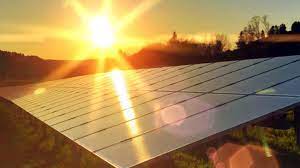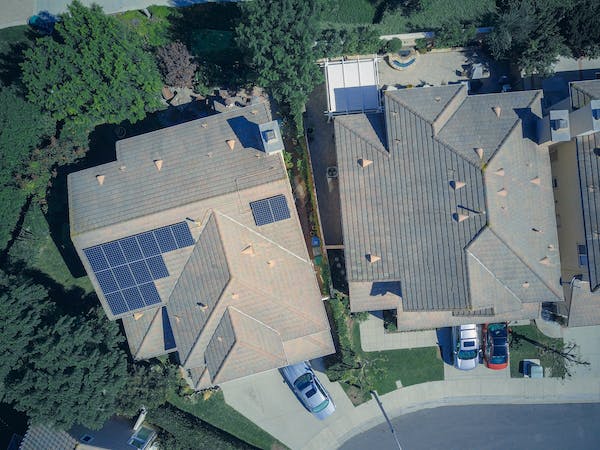Exploring the Latest Solar Energy Innovations from Around the Globe
Solar energy is one of the most promising renewable energy sources of the future. It is becoming increasingly important to find innovative ways to harness the power of the sun and use it to power our lives. Over the past few years, innovators from around the globe have made tremendous strides in developing new solar energy technologies. In this article, we will explore some of the latest solar energy innovations from around the globe and discuss the potential implications for the future of energy.
One of the most promising developments in solar energy is the use of concentrated solar power (CSP). This technology utilizes mirrors or lenses to concentrate the sun’s energy and produce electricity. This electricity can then be used in a variety of ways, including powering homes and businesses. CSP has the potential to reduce carbon emissions significantly, and it is being adopted across the globe in countries such as the United States, India, and China.
Another innovative technology in solar energy is the use of perovskite solar cells. Perovskite is a mineral that has the ability to absorb light and convert it into electricity. This type of solar cell is much more efficient than traditional solar cells and can be produced at a much lower cost. This technology is being developed in countries such as the United Kingdom, the United States, and China, and it has the potential to revolutionize the way we produce and use solar energy.
Finally, one of the most exciting solar energy innovations is the use of floating solar farms. These solar farms utilize the surface of bodies of water to generate solar energy. This technology is particularly attractive because it reduces the need for large amounts of land, and it can be implemented in a variety of locations around the world. This technology is being developed in countries such as the United States, Germany, and India.
These are just a few of the latest solar energy innovations from around the globe. As these technologies continue to be developed and improved, they have the potential to revolutionize the way we generate and use energy. They could also lead to a decrease in emissions and an increase in renewable energy usage. As this technology continues to develop, it is clear that solar energy is an important part of the future of energy.
An Overview of Solar Energy Efficiency: The Latest Technologies and Strategies
Solar energy efficiency has become an increasingly important focus for many businesses and organizations in recent years. This is due to the fact that solar energy has become more affordable and increasingly available in many places. As a result, more businesses and organizations are looking for ways to optimize their solar energy usage and make their operations more energy-efficient. This article will provide an overview of the latest technologies and strategies for improving the efficiency of solar energy systems.
The most important factor in achieving higher solar energy efficiency is the selection of higher-efficiency solar panels. The efficiency of solar cells is measured in terms of the amount of sunlight energy that is converted into electrical energy. Higher-efficiency cells have higher conversion rates, resulting in greater energy output. There are a variety of new technologies available for improving the efficiency of solar cells, including thin-film cells and gallium arsenide cells.
Another important factor in achieving higher solar energy efficiency is the selection of an appropriate mounting system. The mounting system should be designed to maximize the angle of the solar panels to the sun, which increases the amount of solar energy absorbed by the panels. In addition, the mounting system should be designed to minimize shading from trees, buildings, or other obstructions, which can reduce the amount of energy absorbed by the panels. New mounting systems are available that feature automated adjustment mechanisms to ensure that the panels are always pointing at the optimal angle to the sun.
The selection of an efficient inverter is also important for achieving high solar energy efficiency. An inverter is a device that converts the direct current (DC) energy from the solar panels into alternating current (AC) energy, which is then used to power electrical devices. Inverters come in a variety of different sizes and efficiencies. New inverters are available that feature higher efficiency ratings, resulting in more energy output from the same amount of solar energy.
Finally, the installation of an appropriate monitoring system can also help to maximize the efficiency of a solar energy system. Monitoring systems can provide detailed data on the performance of the system, allowing for adjustments to be made to optimize performance. In addition, monitoring systems can help to identify any problems or issues with the system, allowing for a more efficient maintenance schedule.
In conclusion, solar energy efficiency can be improved by taking advantage of the latest technologies and strategies. Through the selection of higher-efficiency solar panels, an appropriate mounting system, efficient inverters, and monitoring systems, businesses and organizations can significantly improve the efficiency of their solar energy systems.
The Benefits and Challenges of Solar Energy Storage Solutions
The use of solar energy storage solutions is becoming increasingly popular as a way to enhance the effectiveness of renewable energy systems. These solutions are a form of energy storage technology that enables the capture of excess solar energy and its reuse at a later time when the sun is not shining. This technology offers a variety of benefits, such as cost savings, improved system efficiency, and environmental benefits. However, it also presents some challenges that must be addressed in order to ensure successful implementation.
One of the primary benefits of solar energy storage solutions is cost savings. By capturing and reusing excess solar energy, these solutions reduce the need for additional energy sources, such as fossil fuels. This can result in significant savings in energy costs, as well as savings in the costs associated with the purchase, installation, and maintenance of traditional energy sources. In addition, solar energy storage solutions can be used to provide a reliable energy source during periods of peak energy demand, further reducing energy costs.
Another benefit of solar energy storage solutions is improved system efficiency. Solar energy systems are often limited by the amount of energy they can produce during periods of low sunlight. Storage solutions can enable the capture and reuse of excess energy, increasing the system’s ability to meet energy needs. This increased efficiency can also reduce the need for additional energy sources and further reduce energy costs.
Finally, solar energy storage solutions can also provide environmental benefits. By reducing the need for fossil fuel-based energy sources, these solutions can reduce emissions and help to combat climate change. In addition, the use of these systems can help to reduce local air pollution and improve public health.
While solar energy storage solutions offer a number of benefits, they also present some challenges. First, these solutions require a significant investment in terms of both time and money. This can make them cost prohibitive for some applications. Additionally, these solutions can be difficult to install and require specialized equipment and expertise. In addition, the cost of replacing batteries and other components can be high. Finally, solar energy storage solutions are limited by the amount of energy they can store, which may not be sufficient to meet all energy needs.
In conclusion, solar energy storage solutions offer a variety of benefits, including cost savings, improved system efficiency, and environmental benefits. However, these solutions also present some challenges that must be addressed in order to ensure successful implementation. By understanding the benefits and challenges of solar energy storage solutions, it is possible to make more informed decisions about their use and ensure their successful implementation.
The Potential of Solar Energy for Future Off-Grid Power Needs
The potential of solar energy for future off-grid power needs is tremendous. As an inexhaustible source of energy, solar power offers a viable alternative to traditional energy sources, such as coal, gas, and oil. Moreover, solar energy is more cost-effective and efficient than ever before, making it a viable option for off-grid power needs.
The cost of solar energy has decreased significantly in recent years. With the proliferation of solar photovoltaic (PV) technology, the cost of producing solar energy is now much lower than the cost of energy produced from traditional sources. This decrease in cost has made it more affordable for individuals and businesses to install and use solar energy systems. Additionally, solar energy systems are becoming more efficient, allowing users to generate more electricity per unit of solar energy. This increased efficiency further reduces the cost of solar energy and makes it an even more attractive option for off-grid power needs.
In addition to its cost-effectiveness, solar energy also has a number of environmental benefits. Solar energy systems do not emit any greenhouse gases or other pollutants, making them a clean, renewable source of energy. Moreover, solar energy systems require very little maintenance, resulting in minimal disruption to the environment. As a result, solar energy can help reduce the environmental impact of traditional sources of energy.
The potential of solar energy for future off-grid power needs is immense. As the cost of solar energy continues to decline and its efficiency increases, solar energy systems are becoming increasingly accessible. With the right incentives and investments, solar energy could become the primary source of off-grid power. As such, it is essential that governments and businesses invest in solar energy infrastructure and incentives that promote the widespread adoption of solar energy. With the right investments, solar energy could become the primary source of off-grid power, providing clean, reliable, and cost-effective energy for the future.
Harnessing Solar Energy for Commercial Applications: A Closer Look at the Benefits and Costs
The use of solar energy for commercial applications is becoming increasingly popular among businesses looking to reduce their energy costs and contribute to a more sustainable future. By harnessing the power of the sun, businesses can benefit from lower electricity bills, improved energy efficiency, and a reduced environmental impact. In addition, solar energy can also be used to generate heat and power for commercial applications. However, before investing in a solar energy system, it is important to understand the associated costs and benefits.
The initial cost of installing a solar energy system can be quite high. Depending on the system size and complexity, businesses may need to invest in solar panels, mounting equipment, and other components. In addition, businesses will need to pay for installation costs and any necessary permits. However, the long-term savings can be considerable. With solar energy, businesses can reduce their electricity bills and generate additional revenue through solar energy sales. Furthermore, businesses can benefit from tax credits and incentives offered by local and federal governments.
In addition to monetary incentives, businesses can also benefit from improved energy efficiency. Solar energy systems generate electricity with little or no waste and can be used to generate heat and power for commercial applications. This can reduce a business’s energy costs and carbon footprint. Furthermore, solar energy systems have few maintenance requirements and can last for decades.
Despite the potential benefits, businesses must consider the potential risks before investing in a solar energy system. For example, solar energy systems require regular maintenance and can be affected by weather conditions. Furthermore, businesses must consider the cost of storage for excess energy generated by the system. Finally, businesses must also factor in the possibility of a decrease in the value of the system over time.
In conclusion, businesses should carefully consider the benefits and costs of investing in a solar energy system. While the initial costs may be high, the long-term savings and improved energy efficiency can be considerable. Furthermore, businesses can benefit from government incentives and reduced environmental impacts. However, businesses should also be aware of the potential risks associated with solar energy systems and factor these into their decision-making process.






